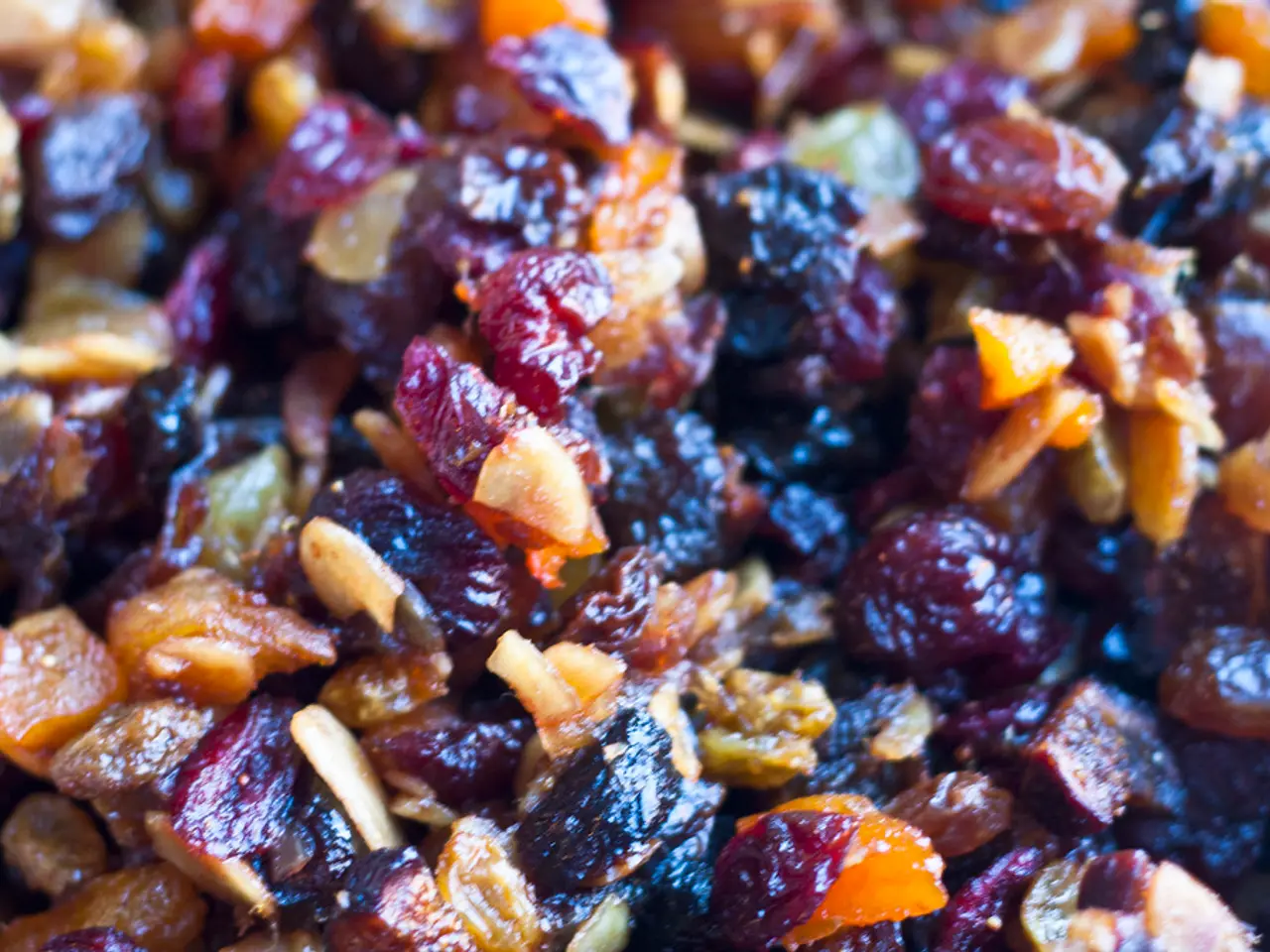Nutrition and meal plans for reducing hypertension: Suggested foods and dietary strategies
In the realm of health, low blood pressure, also known as hypotension, can sometimes be a cause for concern. This condition can present with a variety of symptoms, including dizziness, lightheadedness, fatigue, blurred eyesight, unsteadiness, and in some cases, fainting. These symptoms may worsen after meals, a condition known as postprandial hypotension, where blood pressure drops significantly within 30 to 60 minutes after eating. Severe or persistent symptoms, or a blood pressure consistently below 90/60 mmHg, warrant a medical consultation [2].
When it comes to managing low blood pressure, dietary changes play a significant role. The primary focus is on increasing salt intake and consuming foods that can help raise blood pressure. Recommended foods include salted nuts, pickles, and salted buttermilk, potassium-rich fruits like bananas and papaya, almonds, raisins (especially soaked overnight), and other nuts, ginger and garlic, oats, khichdi (a rice and lentil dish), roti with vegetables, and lemon water with a pinch of salt [2][3][4]. Moderate coffee consumption can also provide a temporary boost to blood pressure [2][4].
In addition to these, it's suggested to avoid long gaps between meals by eating small, frequent meals to prevent sudden drops in blood pressure, particularly postprandially [2][3]. Some natural remedies include chewing basil leaves with honey, drinking beetroot juice to improve circulation, and increasing hydration [2][4].
For those seeking home remedies, soaked raisins and tulsi leaves with honey are worth considering. A deficiency in vitamins B12 and folate can cause anemia, leading to low blood pressure. Good dietary sources of these vitamins include meat, eggs, fish, dairy products, and fortified foods like breakfast cereals and plant-based milks. Leafy green vegetables, broccoli, legumes, eggs, beets, citrus fruits, nuts, seeds, wheat germ, and liver are also rich in folate [2].
However, it's important to note that high salt intake can increase blood pressure, and individuals should not choose low-salt options unless recommended by a healthcare professional. Foods and beverages containing caffeine may cause a rise in blood pressure, but research suggests that coffee temporarily raises blood pressure only in people who do not drink it regularly [2].
Dehydration can also cause a drop in blood pressure, so maintaining hydration is crucial. People who have low blood pressure may benefit from increasing their salt intake, but this should be done under the guidance of a healthcare professional. Those with postural hypotension should stand up from a sitting or lying position slowly to avoid fainting and dizziness [4].
In summary, managing low blood pressure involves a combination of dietary changes, home remedies, and lifestyle adjustments. If you have concerns about low blood pressure symptoms, it's always best to discuss them with your doctor, who can examine any potential side effects of medications and make necessary adjustments.
- In the realm of medical-conditions associated with health-and-wellness, COPD (Chronic Obstructive Pulmonary Disease) is often linked with hypertension, diabetes, and depression.
- Scientific studies have shown that predictive analysis can help in early detection of these comorbidities in patients suffering from COPD.
- Maintaining a balanced diet rich in nutrition, fitness-and-exercise, and avoiding certain medications can help reduce the risk of these medical-conditions.
- For instance, consuming salted nuts, pickles, and salted buttermilk can help in managing low blood pressure, while foods high in potassium such as bananas and papaya can help maintain a healthy balance in blood pressure.
- Additionally, diabetics should monitor their AQ (air quality) levels, as poor air quality can exacerbate their condition and lead to difficulty in managing blood sugar levels.
- It's crucial for individuals with medical-conditions and low blood pressure to consult a healthcare professional before making any major dietary or lifestyle changes.




